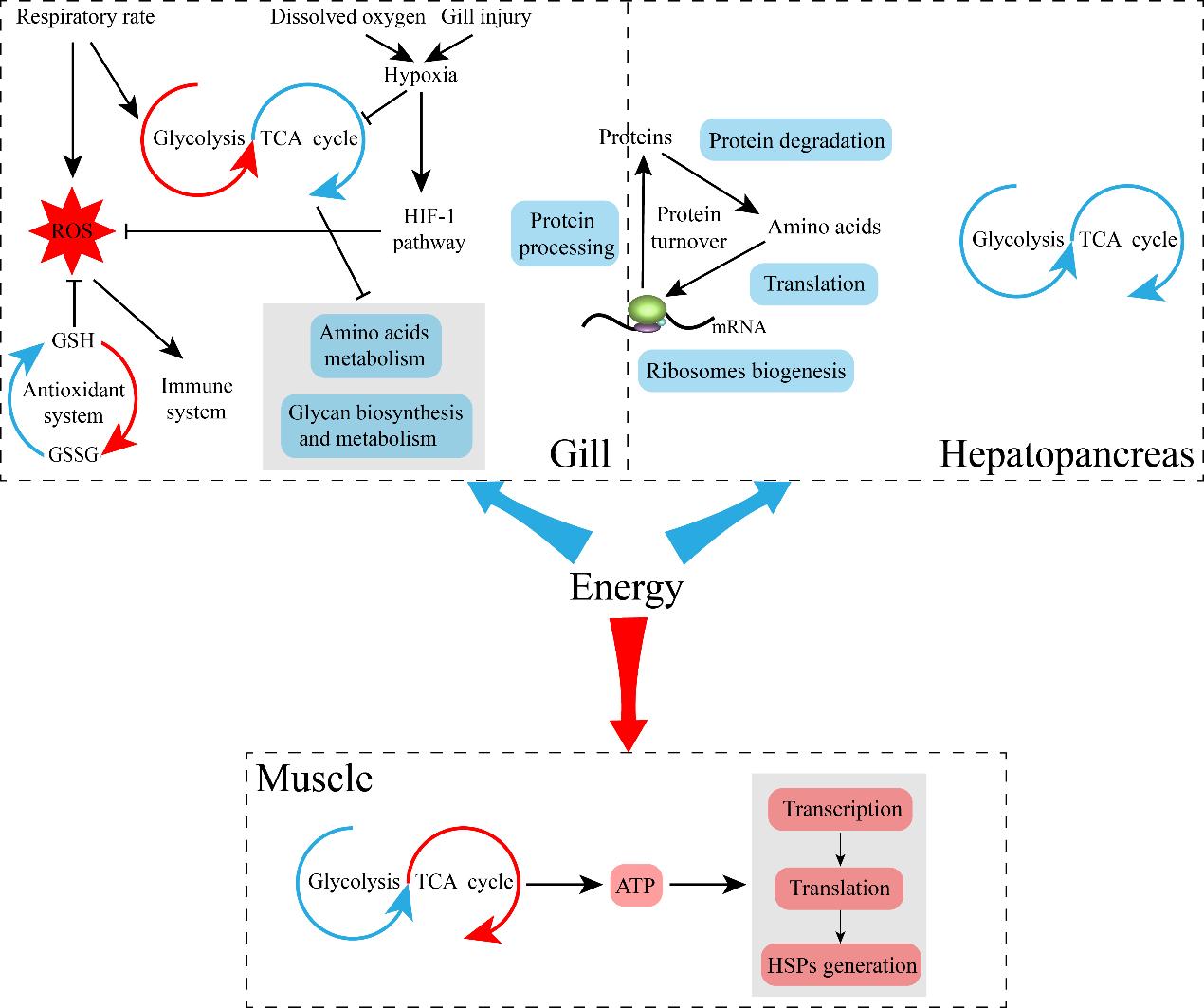High economical values and excellent characteristics for breeding enable the Pacific white shrimp Litopenaeus vannamei to become one of the major aquaculture species in the world. However, in summer, continuous hot weather or periodic temperatures above 35°C results in high mortality rates of the shrimp. Therefore, it is urgent to investigate the mechanisms of L. vannamei in response to high temperature.
Presently, most of studies about heat stress were limited to single tissues or few indicators, for instance, antioxidant enzyme activities were altered, extensive heat shock proteins (HSPs) were induced and the oxygen consumption significantly increased. However, the spatial network of various tissues cooperation and its relationship with energy in response to heat stress remain scarce.
Recently, the research team led by Prof. LI Fuhua from the Institute of Oceanology of the Chinese Academy of Sciences (IOCAS) provided new insight into the energy reallocation strategy in L. vannamei responsive to heat-stress.
The study was published in Ecotoxicology and Environmental Safety on May. 5.
Researchers conducted a comparative and sound transcriptomic analysis on three tissues of shrimp under heat stress, including hepatopancreas, gill and muscle. They found that energy-related genes were the main change genes, which inferred that energy flux might be reallocated among different tissues under heat stress.
Researchers suggested that less energy is channeled into energetically expensive protein turnover in gill and hepatopancreas for minimally life sustaining, more energy is reallocated to heat protection in muscle and antioxidant system in gill under elevated heat conditions in the shrimp.
"Understanding the cooperation of various tissues of animals in response to heat stress is the basis for clarifying the regulation mechanism of different species under heat stress," said Dr. ZHANG Xiaoxi, first author of the study.
"We suggest that different tissues may cooperate with each other simultaneously via energy reallocation in response to heat stress. Less energy was channeled into protein turnover in gill and hepatopancreas, and more energy was required for muscle to get out of adverse circumstances," said Prof. ZHANG Xiaojun.
"This work not only provides a comprehensive understanding of the molecular mechanism of L. vannamei in response to high temperature, but also lays the foundation of mining thermotolerance genes and proposing effective strategies to cope with the high temperature environment," said Prof. LI.
The research was supported by the National Key R&D Program of China, China Postdoctoral Science Foundation, the National Natural Sciences Foundation of China and China Agriculture Research System.

Schematic illustration of separate responses and energy reallocations among three tissues under heat stress. The red and blue rectangles or arrowheads represent up-regulated and down-regulated biological processes.
Zhang X, Yuan J, Zhang X, Yu Y, Li F. (2022). Comparative transcriptomic analysis unveils a network of energy reallocation in Litopenaeus vannamei responsive to heat-stress. Ecotoxicology and Environmental Safety, 238: 113600.
ZHANG Xiaoxi, LI Fuhua
Institute of Oceanology
Email: zhangxiaoxi@qdio.ac.cn; fhli@qdio.ac.cn
(Editor: ZHANG Yiyi)

